
90% wound closure within 72 hours1
25% nerve recovery at 5 weeks vs 9% with standard blades2
Reduces scarring in facelift surgery by 86% vs standard scalpels3
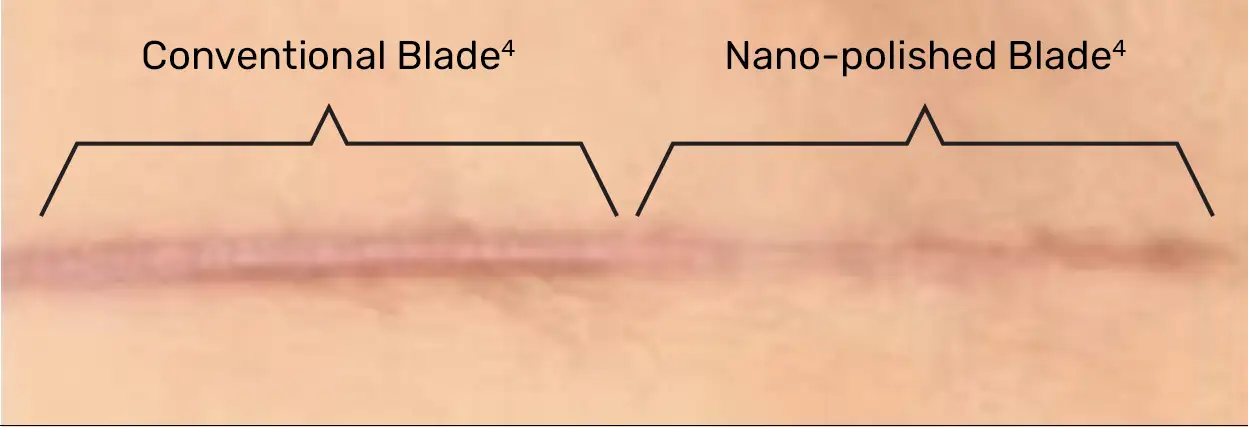
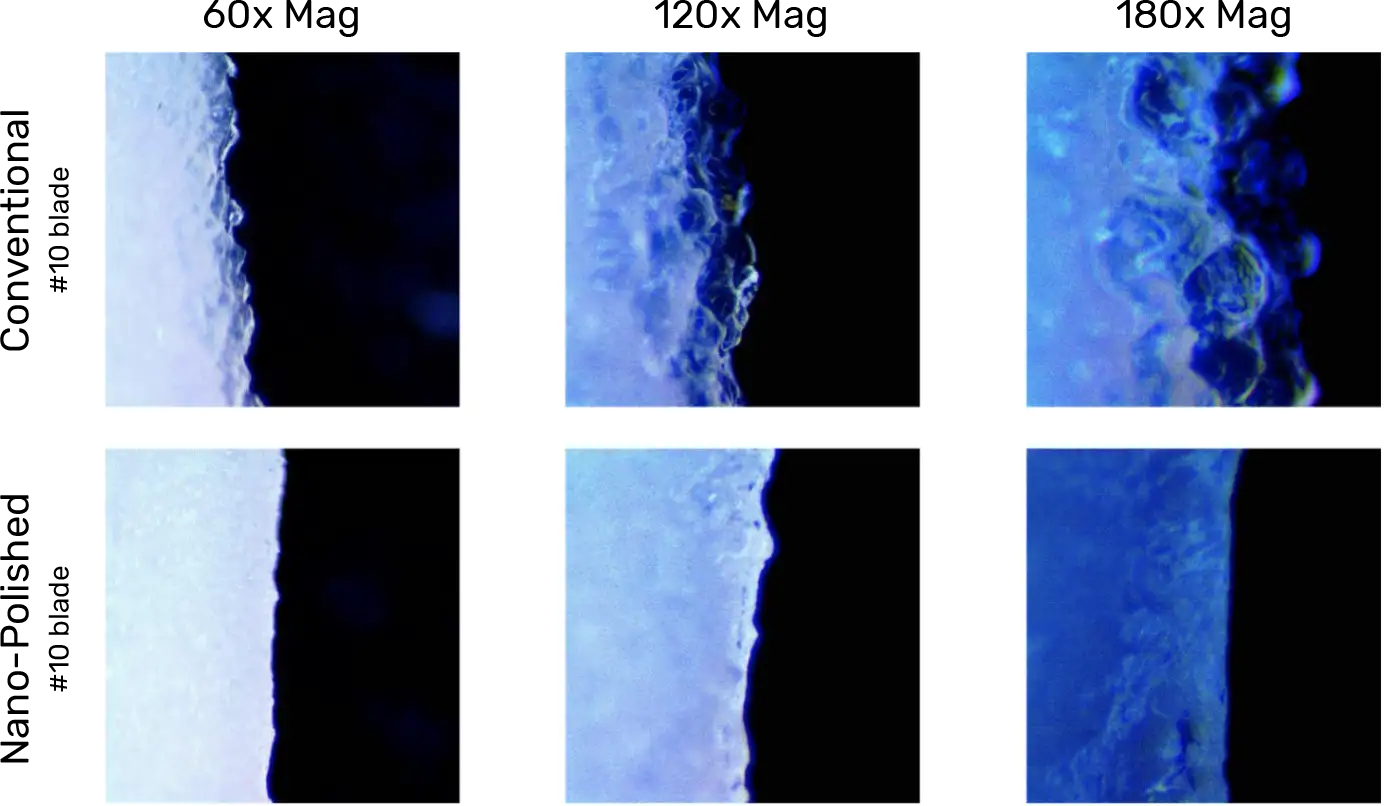
Incisions made by a nano-polished blade result in a less traumatized wound edge…The scar that forms is less prominent and boasts a more uniform appearance due to the balanced collagen distribution enabled by the nano-polished blade.5,7
Histology study: Significantly reduced macrophage density by at least 40%1
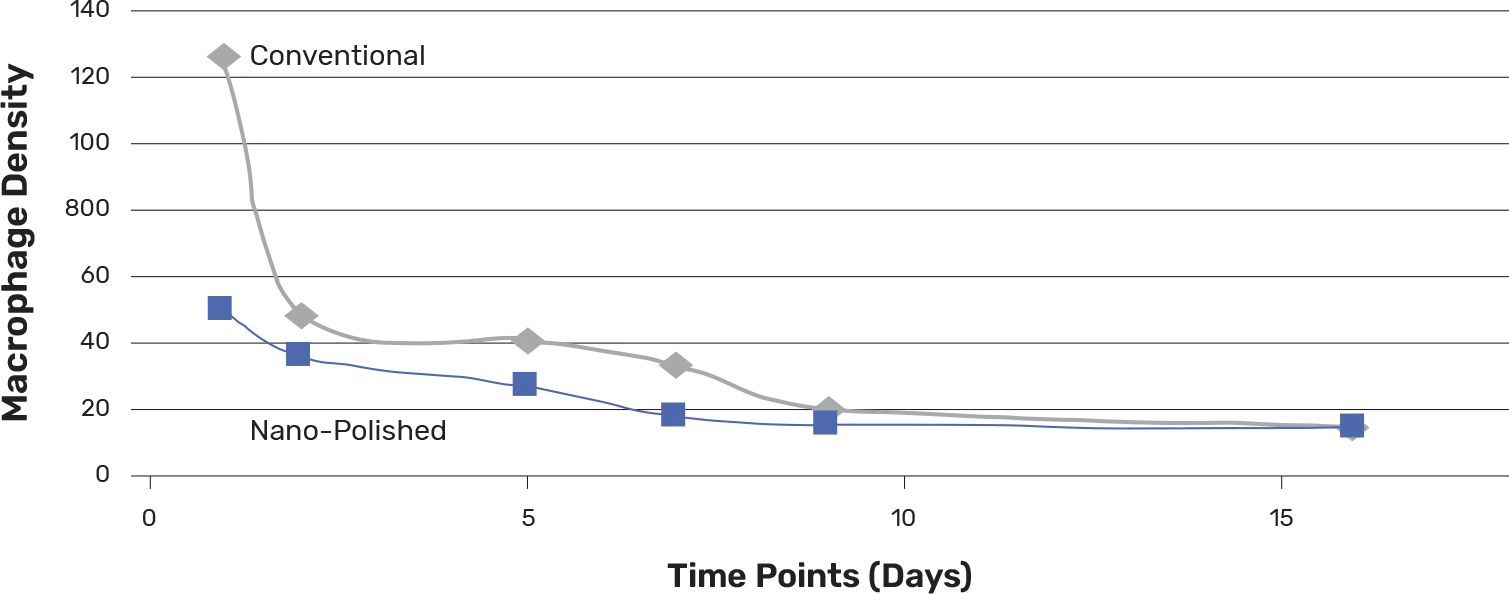
Stained nerve tissues: Improved axon regeneration with nano-polished blade2
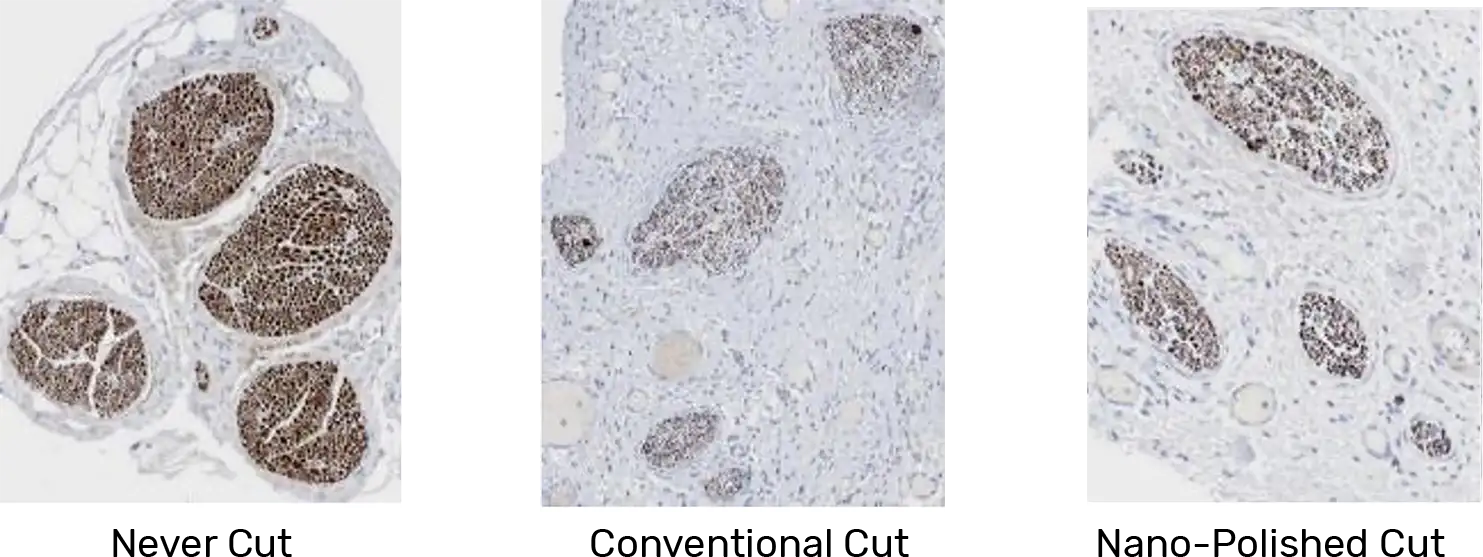
Standard blade (9% recovery) vs Nano-polished blade (25% recovery)2
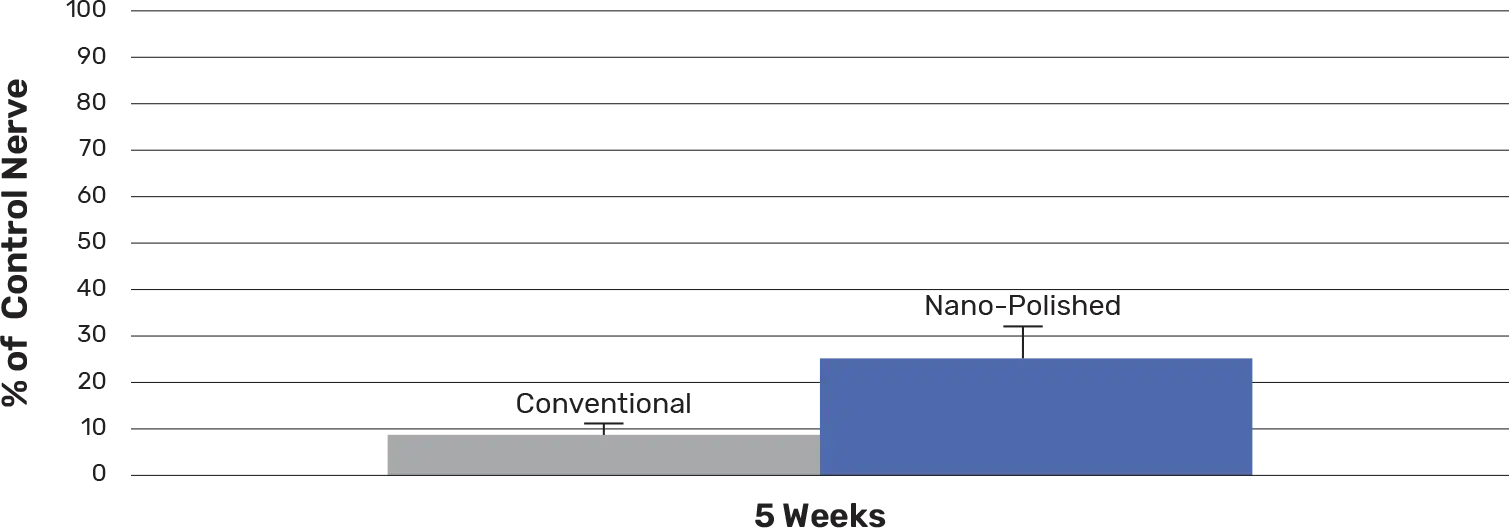

Fewer blade exchanges streamline procedures and reduce inventory requirements, OR time, and associated costs11
Planatome blades and cutting instruments utilize patented polishing technology, adapted from the semiconductor industry, to deliver near molecular-perfect edge precision that reduces tissue trauma and accelerates healing to improve outcomes. They offer enhanced consistency, sharpness, and control during procedures while also providing enhanced durability.
Our blades are engineered to reduce drag and micro-tearing, which leads to less inflammation, minimized scarring, and faster patient recovery.
Yes. Planatome blades are designed to integrate seamlessly with standard surgical blade handles, ensuring ease of adoption without changes to your current workflow.
Our blades and instruments are ideal for precision-critical procedures such as plastic surgery, ophthalmic, orthopedic, cardiovascular, and neurosurgery—any field where fine control and clean incisions are essential.
No special protocols are required. Our blades are available as sterile single-use instruments and comply with all standard handling and disposal procedures. Other cutting instruments, such as scissors, rongeurs, curettes, etc, are processed in traditional SPD autoclave protocols.
Yes, we offer sample kits and support clinical evaluations.
Surgeons who use Planatome blades and instruments report improved precision, cleaner incisions, and faster patient recovery compared to traditional blades, especially in microsurgical or cosmetic applications. Visit Clinical Perspectives.
References
Bigdelle V, Ling MX, Clifford L, Spiro CL, Lee RC. Effect of scalpel cutting edge roughness on surgical incisional inflammation and scarring. Am J Obstet Gynecol.
Prescher H, Ling MX, Bigdelle V, Spiro CL, Lee RC. Scalpel edge roughness affects post-transection peripheral nerve regeneration. Surg Open Sci. 2021;4:1-6. doi.org/10.1016/j.sopen.2020.11.002
Data on file, Planatome, LLC. Agullo FJ, Sanchez MJ, Jeffcoat K. Scar occurrence with use of nano-polished blade versus conventional scalpel blade on facelift patients: a single center retrospective study. 2025.
Data on file, Planatome, LLC. Internal company study. Choi JW. Planatome initial human case midline laparotomy study. 2017.
Chen P, Piao X, Bonaldo P. Role of macrophages in Wallerian degeneration and axonal regeneration after peripheral nerve injury. Acta Neuropathol. 2015;130(5):605-618. doi:10.1007/s00401-015-1482-4
Data on file, Planatome, LLC. Internal company document. Jeffcoat KL. Microscopy study 10062023. 2023.
Data on file, Planatome, LLC. Whitepaper. Superiority of nano-polished surgical blades: an analysis of their impact on healing and implications for postoperative outcomes.
Eijkelkamp RW. Significantly reduced macrophage density, linked to pain development through the production of inflammatory mediators. Presented at: British Society of Rheumatology; August 2017.
Data on file, Planatome, LLC. Internal company document. Lee RC. Macrophage density post nano-polished blade incision. 2020.
Data on file, Planatome, LLC. Internal company document. Dale N, Jeffcoat JL. Benchtop durability testing of Planatome blades versus conventional blades. 2024.
Data on file, Planatome, LLC. Whitepaper. Superior surgical efficiency and outcomes: the economic advantages of Planatome nano-polished surgical blades.